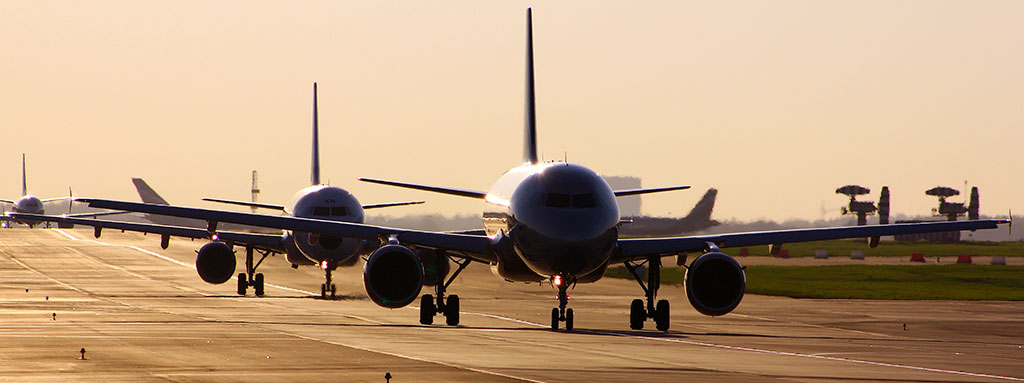Air Transport has been growing for the last 30 years at an average of 5% per year. The industry forecasts to continue this trend and double the number of commercial aircraft by 2040. It makes sense, as the world becomes wealthier and more people are moving into the middle-class income segment, more air travel is to be expected.
Europe cannot afford an uncompetitive airspace in a global economy.
Nevertheless, there are many challenges ahead if we want to make these predictions true. Eurocontrol projects that twenty airports in Europe will operate under severe congestion levels by 2040.
According to the European Commission, “Inefficiencies caused by Europe’s fragmented airspace bring extra costs of close to €5 billion each year”. If we don’t implement the Single European Sky, it is anticipated that air space congestion will keep many aircraft on the ground.
Furthermore, despite noise-reduction efforts made by engine manufacturers, the continuous increase of airplane movements near heavily populated areas will intensify the social pressure against the industry. It’s the old motto of air-travel-OK-but-not-in-my-backyard.
Finally, the industry will have to face and tackle the challenge of carbon dioxide emissions. The current belief that the development of more efficient engines will reduce greenhouse emissions is nonsense. Fuel efficiency is – paradoxically – aggravating the problem even further. Just one piece of information: the industry itself is predicting current emissions will double by 2040. It makes sense. The more fuel efficient the airplanes are, the cheaper it is to travel. As a result, more people are travelling more and further away. No wonder the industry is expecting to double its business in the next twenty years.
Based on the above, what can we expect in the following 25 years?
I believe that the Single European Sky will become a reality. This is the case with or without Brexit. Europe cannot afford an uncompetitive airspace in a global economy. Furthermore, the actual navigation system based on landmarks and voice radio transmitters will disappear. Flexible and more direct routes will be achieved by using data-link communicators. They will provide all the information needed for complex and safe navigation.
Noise will continue to be an issue. Noise has a cumulative effect; as a result, quieter airplanes won’t do the trick if the number of flights over a neighborhood keeps growing fast. Therefore, the total global population exposed to aircraft noise will continue to grow. The problem could partially be mitigated by fostering the use of alternative and smaller airports. This way the noise will be “diluted” among larger groups of population. Nevertheless, as I said before, we must expect increasing opposition from communities against developing an airport nearby.
The carbon dioxide emissions issue is even harder to solve. The existing state of technology does not anticipate a change in the use of fossil fuels in aviation in the near future. Aircraft, by definition, need to be light weight. As a result, they need to be powered using high-density forms of energy. Alternative green energies – such as wind, solar or hydro power – can generate green electricity. But electricity, as we all know, requires very heavy storage systems. Biofuels could be a solution, but as we are experiencing, they also generate some unwelcome collateral damage.
Nevertheless, air transport only represents 2% of the total human-made emissions. In the short term, there is no viable mode of transportation that can substitute air transport for distances of 1,000 Km or more. Humankind will have to make efforts in other fields – where there are indeed alternative sources of energy – if we want to curb the greenhouse emissions effect.
Finally, if we overcome all the challenges described above, I believe that a new competitor will come into the market: The autonomous flying vehicle.
The autonomous flying vehicle – a computer controlled personal flying device – will revolutionize transportation in the same way the private car did in the previous century. Travel time to reach London from Rennes or Paris will be more or less the same. As a result, small towns will become more competitive as it won’t be necessary to be close to a big airport for a swift mode of transportation. Cars moved people from the inner cities to the suburbs, autonomous flying vehicles will move people from big cities to small communities.
And if you want to dream even further, the suborbital spacecraft is the next frontier. Travelling from Europe to the US in less than an hour will be at the fingertips of our grandchildren. They will be able to fly from Europe to New York for a daytrip, visit the MoMA, have some hotdogs in Times Square, and return home to watch the European Champions League final. Sounds good to me.



